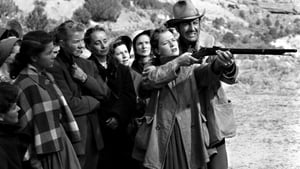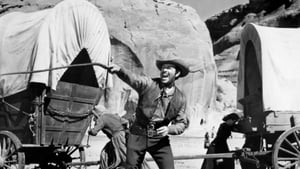Contact: [email protected]
Video Sources 0 Views

Synopsis
[ez-toc]




Introduction
In the vast landscape of old movies, there’s a gem that has not only withstood the test of time but has undergone a vibrant transformation. “Westward the Women Colorized,” a 1951 classic, has been reimagined in full color, breathing new life into the sweeping landscapes of the American West. This colorized masterpiece transcends the boundaries of time, inviting audiences to experience the journey of pioneers in a way never seen before.
Read Media File Transfer Agreement: Terms and Conditions
Read FAQ
Brief History of Colorization in Film
Before we delve into the brilliance of “Westward the Women Colorized,” it’s essential to understand the controversy and evolution of colorization in film. The practice of adding color to black-and-white films has sparked debates among purists who argue for preserving the original aesthetic and those who believe colorization can enhance the cinematic experience. This controversial technique has been both lauded and criticized, making “Westward the Women Colorized” a fascinating subject for exploration.
To captivate readers, let’s begin with a compelling hook that intertwines the allure of the old West and the intrigue of colorized cinema. Imagine riding alongside pioneers on the California Trail, witnessing the breathtaking landscapes in hues that evoke a sense of realism and nostalgia.
The Making of a Western Masterpiece
“Westward the Women Colorized” is the brainchild of director William A. Wellman, who skillfully helmed the project to create a timeless narrative. At the forefront of the cast are Robert Taylor and Denise Darcel, delivering performances that transcend the limitations of the era. Wellman’s vision, coupled with the actors’ dedication, elevates this film beyond the constraints of its time.
Behind the scenes, the production of “Westward the Women” faced unique challenges. The film navigates the post-World War II landscape, reflecting the resilience and determination of a society grappling with change. The historical context becomes an integral part of the film’s identity, enhancing its depth and relevance.
Journeying Across the American Frontier: The Plot and Characters of “Westward the Women Colorized”
The heart of “Westward the Women” lies in the compelling characters and their arduous journey across the California Trail. Roy Whitman, played by Robert Taylor, leads a group of women on a wagon train, defying conventions and societal norms. The film delves into the intricacies of each character, exploring their motivations, fears, and dreams.
The wagon train itself becomes a symbol of community and survival, providing a canvas for the evolving dynamics among the women. As readers journey through the plot, they’ll discover the challenges faced by the characters, both external and internal, as they navigate the unforgiving terrains of the American West.
Facing Adversity: Challenges and Hardships Along the Way
The narrative of “Westward the Women Colorized” is punctuated with intense action sequences, from Indian attacks to stampedes and perilous descents. These challenges test the women’s resolve and unity, showcasing their strength and tenacity in the face of adversity. The film transforms into a gripping tale of survival, adding layers of tension that keep audiences on the edge of their seats.
Empowerment in the Wild West: Resilience and Courage of Female Pioneers
At its core, “Westward the Women Colorized” stands as a testament to the resilience and courage of female pioneers in the Wild West. In a male-dominated society, the film portrays women as agents of change, breaking free from stereotypes and contributing significantly to the frontier’s development. The empowerment theme resonates strongly, making the film a trailblazer in its portrayal of gender dynamics in the Western genre.
From Black and White to Full Color: The Significance of Colorization in Restoring Old Films
The introduction of colorization in film restoration is a pivotal point in cinema’s evolution. The technique not only preserves the aesthetic qualities of classic movies but also introduces them to a modern audience. “Westward the Women Colorized” benefits immensely from this process, with colorization enhancing its visual storytelling. The vibrant hues breathe life into the landscapes, making the film more immersive and engaging.
Reviving the Past: The Process of Colorizing “Westward the Women Colorized”
The meticulous process of colorization involves a delicate balance between preserving authenticity and modernizing visuals. Experts engaged in the restoration work of “Westward the Women Colorized” share insights into their approach, underscoring the importance of maintaining the film’s integrity while embracing the advantages of color enhancement.
The debate between purists and proponents of colorization becomes a central theme. Purists argue for preserving films in their original black-and-white format, emphasizing the historical significance of the medium. On the other hand, advocates for color enhancement assert that it revitalizes old classics, making them more accessible to contemporary audiences.
Legacy and Influence: Reappraising a Colorized Classic
As the colorized version of “Westward the Women Colorized” enters the cinematic arena, it faces the scrutiny of critics and fans alike. Reception varies, with some praising the enhanced visual experience, while others express reservations about departing from the original aesthetic. A balanced examination of both positive and negative feedback provides readers with a comprehensive view of the film’s reception.
The enduring impact of “Westward the Women” on future Westerns and its contribution to reshaping gender representation in the genre cannot be overstated. The film’s influence reverberates through time, influencing subsequent cinematic narratives that explore the complexities of the American frontier.
Preserving Cinematic Treasures: The Role of Colorization in Ensuring Accessibility
Colorization emerges as a bridge between generations, fostering an appreciation for classic films among younger audiences. The debate around accessibility versus preservation takes center stage, emphasizing the importance of initiatives like colorization projects and archival work. “Westward the Women Colorized” becomes a beacon, illustrating how colorization can be a powerful tool in preserving cinematic treasures for future generations.
In conclusion, “Westward the Women” stands as a 1951 film reborn through the vibrant lens of colorization. It is a testament to the indomitable spirit of pioneer women in the American West, a spirit strengthened by the film’s skillful restoration. As a film reviewer and editor, my recommendation is twofold: experience the film in its original black-and-white form to appreciate its historical context, and then immerse yourself in the colorized masterpiece for a fresh, visually stunning perspective. “Westward the Women” in color is not just a cinematic journey; it’s a vibrant exploration of the past, inviting audiences to witness the West as never before.












